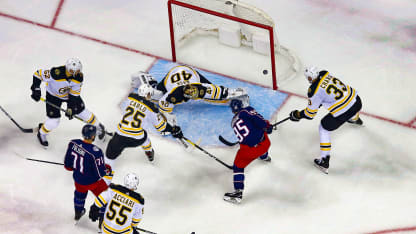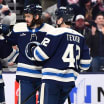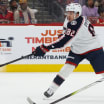During the regular season, the Blue Jackets finished 28th in the NHL in power-play percentage at 15.4 percent. Even down the stretch, it's not like Columbus caught fire, with the team going 4 for 21 (19.0 percent) in the last 10 games of the regular season; better, but even that mark wouldn't have been in the top half of NHL teams through the campaign.
But since the playoffs began, the Jackets have been on fire. Columbus has a power-play goal in six of the seven games thus far and has won every game in which it has scored with the man advantage. In all, the team is 8 for 21 (38.1 percent) in the playoffs on the power play, and that doesn't include a game-winner in the series clincher vs. Tampa Bay that was scored on a delayed penalty.
"Sometimes it just gets streaky," head coach John Tortorella said. "We haven't changed a lot as far as how we're playing, we're just playing."
So while the Jackets say there hasn't been a massive overhaul to the team's strategy or personnel on the power play -- something that is true -- there have been some key traits to the success the team has had.
Here's a look at a few.
Getting set:The keys to a good power play aren't really that hard. First, a team has to get the puck in the zone, whether it's by winning the offensive zone faceoff that generally comes after a penalty or by getting the puck across the blue line and then establishing possession.
Then the talent takes over, with the team trying to move the puck in a way that creates good looks on net, whether that's a shot through a screen from the point, an open shot from the wings or a rebound in front.
When it comes to establishing possession in the zone, the Blue Jackets have scored power-play goals this postseason both through faceoffs and zone entries. Early on in the Tampa series, Matt Duchene was strong on draws on the power play, allowing the team to get set up and then go from there (think Zach Werenski's power-play marker early in Game 2, when Duchene won a draw back to the defenseman, who fired through traffic and into the top corner past Andrei Vasilevskiy).



















